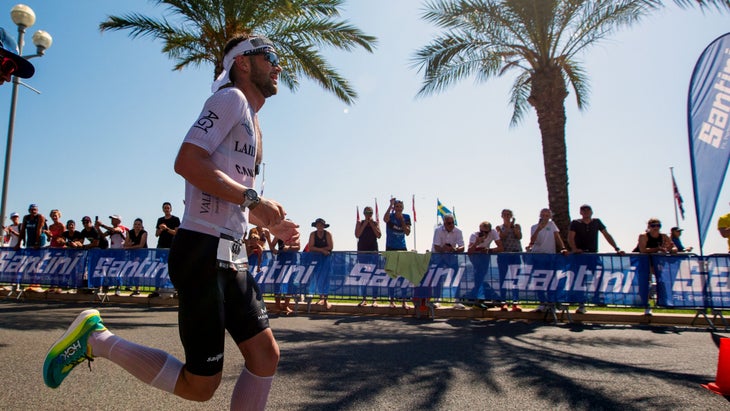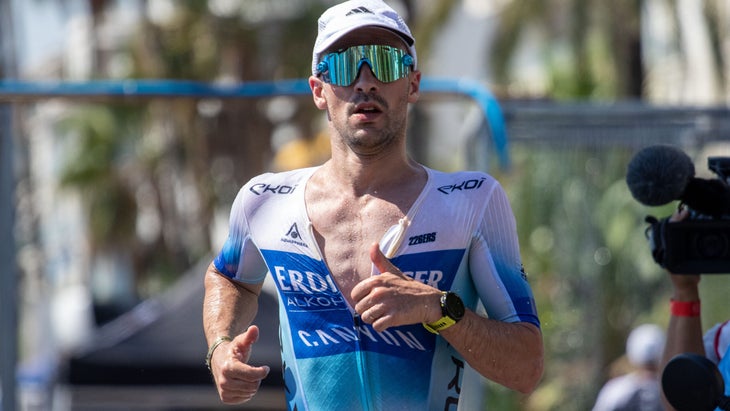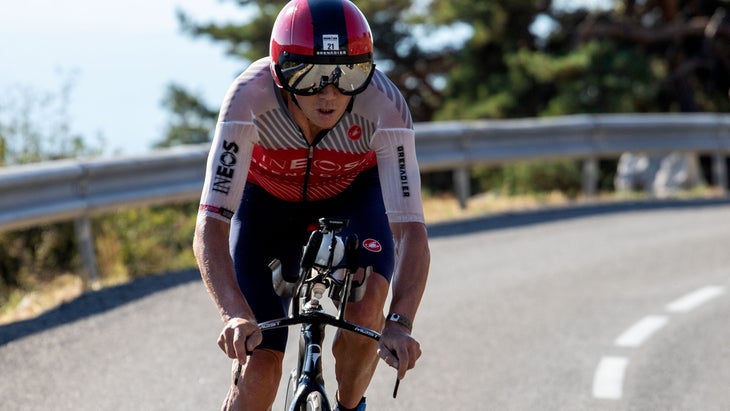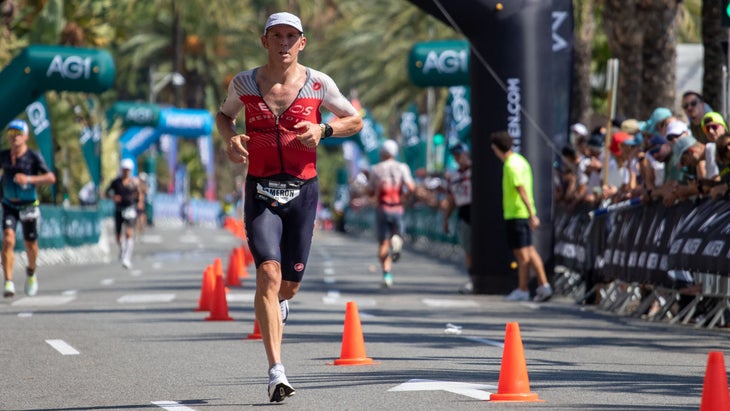New perk! Get after it with local recommendations just for you. Discover nearby events, routes out your door, and hidden gems when you sign up for the Local Running Drop.
Before the race, everyone was saying that this version of the Ironman World Championship in Nice, France clearly benefited the cyclists. And for the most part, many felt it was “about time.” Recent history in Kona rewards only “übercyclists” who know precisely the right strategy to employ at just the right time—bridging up patiently, but just urgent enough to make the group before the climb to Hawi without blowing apart, then gauging that effort just right back into town. Or, conversely getting away with just enough space to not get eaten up on the run, but not so far that they fall apart in the grueling heat. In the last nine years, this has yielded a top-five finish—maybe a podium—but not a win.
So after looking at the results from last weekend’s race, does the bike have too much of an impact now? With an incredibly flat, fast, (and mind-numbingly featureless) run, is too much of the racing over before T2? Or does this new Nice course reward a more complete triathlete overall – the one we’ve seen evolving over the past few years?
The end result and lack of apparent drama in the final few hours of racing felt maybe like a function of the bike course, but there’s more to it than that. This might not be the “fault” of the Nice course, as a similar dynamic played out in Lahti at the men’s 70.3 Worlds race—when a group of motivated cyclists got away and could run well too. So rather than blame the course, it’s more likely that we’re getting away from the era of the überbiker whose best bet is to weather a controlled implosion on the course and hang on for dear life.
Images of the old-school überbiker looked something like a hulking nordic triathlete who would bike through the field, grab the fastest split of the day, spend hours at the front of the broadcast, then slowly melt like ice cream on the Kona pavement. Melt slowly enough, and you win. But today we’re seeing “überbikers”—that is guys who are smashing bike course records and posting top splits—who can then back their speedy ride up with a 2:41 marathon.

Sam Laidlow certainly didn’t look like he was hanging on for dear life on the run; neither did Magnus Ditlev. It took Patrick Lange, one of the fastest runners in iron-distance racing, running one of the fastest marathons in iron-distance racing, to even make the thing quasi-interesting. (Which also brings up the point that the days of the süper-runner are probably over—which we saw with Lange actually having to ride super well and take aggressive risks on the bike to stay even within spitting distance of the podium.)

Another good data point is the role pro cyclist Cam Wurf played—or didn’t play—in last weekend’s race. Everyone predicted Wurf’s abilities would wreak havoc on the field (me included). We (I) thought Cam would get through the leaders by the top of the Col, ride away on the plateau, and then widen his gap to a 10-minute-plus lead in T2.

What he did with that gap was up for question, but we never even got there. Not only did Wurf not ride through the field, but he lost time to Laidlow and only slightly chipped away at Ditlev and Von Berg—who all ended up in the top four.
To put not-too-fine-of-a-point on it: Wurf was expected to impact the race substantially and ended up being nearly irrelevant in both race-day dynamics and the final results (he faded from fourth to 14th on the run). If you need to put a face to the “demise of the überbiker,” you could watch Wurf as 10 guys passed him on the flat Niçoise pavement (and still ran 2:58, not like he imploded to a 3:15+ meltdown).

In Nice, if you wanted to be in the top six overall—with the exception of Lange—you needed to ride with a top-six bike split. This wasn’t the case in Kona last year; there the biggest qualification was a top-six run (with the exception of Kienle). Interestingly enough, the same old rule applied at the decidedly more technical/hilly Ironman World Championship in St. George: Ride for show, run for dough.
The new axiom we saw after this weekend’s Ironman World Championship in Nice sounds a little more like “ride and run to show if you want dough.” The apparent lack of drama and excitement on the run and in the overall standings late in the game was somewhat a function of the course, but more likely due to an evolved field of very fast, very complete (and quite young) triathletes. A little like what we saw in Kona last year, but even more pronounced.
Only time will tell if the überbikers’ days are at an end, but with the entirely undramatic way this year’s men’s Ironman World Championships played out, it’s likely we’re looking at a new era of next-generation multisport pros who don’t specialize in swim, bike, or run, but rather in swim, bike, and run.
Vive la France! Visit our Nice Central hub for news, analysis, history, photo galleries, and so much more – new stories added daily from our team on the ground at the men’s 2023 Ironman World Championship.
